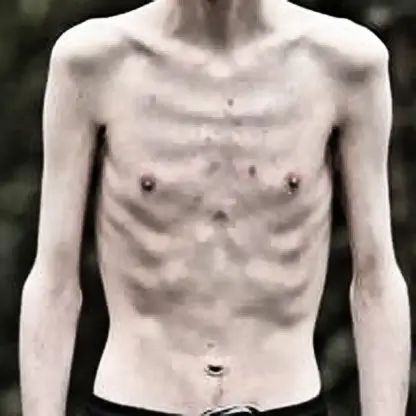RUSHING THE WEIGHT LOSS
It is not uncommon to see people trying to lose several pounds in an extremely short time-frame. Desperate times call for desperate measures, and commonly people go for extreme and unhealthy approaches. Dehydration or mutilation can be evaluated as abnormal behavior to achieve a lower number on the scale, but losing muscle tone to accomplish the same goal seems more socially accepted, despite the impact it can have on someone’s health.
The key to avoiding extreme measures is to understand the parameters of healthy eating.
DESIGNED FOR SURVIVAL
Just like any organism, the human body has evolved to survive. Many people around the world must survive with one meal a day or even every other day. For those people, good health or long life expectancy is not the priority, they are just trying to make it to the next day. People who commonly under-eat are able to keep doing it for a long time, unfortunately at the cost of their own health.

BASAL METABOLIC RATE
The pure fact of being alive utilizes energy. The energy required for mere survival, without any physical activity, is what is known as Basal Metabolic Rate (BMR). The BMR varies slightly from person to person. Factors such as lean body mass, body weight, age, and thyroidal activity play a role in the whole equation.
Back in 1919, a group at the nutrition laboratory of the Carnegie Institution of Washington came up with the Harris Benedict (HB) Formula to calculate the Basal Metabolic Rate.
BMR = 66 + (13.7 X weight in kilos) + (5 X height in cm) – (6.8 X age in years).
The HB formula was developed much before the creation of the penicillin, or the discovery of insulin. Needless to say, it is not extremely accurate since it doesn’t take into consideration the thyroidal activity or body mass composition, but it is at least a good number to start with.
Nowadays, there are more accurate procedures to determine our BMR. BodyGem and MedGen are among the two most popular devices to calculate the magic number.
HOW MUCH IN HOW LONG?
Someone who knows they didn’t gain weight overnight, shouldn’t expect to lose it at that rate either. A healthy amount of weight to lose is 2 lbs per week.
In order to lose 2 lbs per week, one should aim for a caloric deficit of 500 calories a day. This is where the HB formula comes in handy.
HB FORMULA IN THE PRACTICE
Cecilia, a hypothetical person, who is 45 years old, weighs 130lbs, stands at 5’2 (62 inches) tall, walks 10K steps a day, lift weights 3 times a week (burning 200 calories every time) and wants to lose 10 lbs in the next 5 weeks.
How many calories a day should Cecilia consume daily?
DATA
130lbs = 59Kg
62 inches = 157 cm
45 years old
BMR
HB Formula for BMR: 66 + (13.7 x 59) + (5 x 157) – (6.8 x 45)
Cecilia’s BMR = 1353 calories/day = 9471 calories/week
PHYSICAL ACTIVITY
*Walking 10k steps (around 5 miles)= ((130 x 100) / 175) x 5
= 371.4 calories x 7 =2600 calories/week
Weight Lifting = 200 x 3 = 600 calories/week
TOTAL CALORIE EXPENDITURE
9471 + 2600 + 600 = 12671 calories/week
Average= (12671 / 7) = 1810.14 calories/day
In order for Cecilia to lose 2 lbs per week, she should consume 1310 calories a day (1810 – 500).
*- A 175lbs person burns 100 calories per mile.
Cecilia (130lbs) would burn her weight x 100/175 calories.
UNDER-EATING BRINGING UNDESIRED RESULTS
Under-eating can lead to very unhealthy scenarios. As a part of the survival system, the body will decrease the thyroidal activity in order to utilize the calories as efficiently as possible. Also, without enough calories and nutrients to support high activity levels, the body will lose muscle mass (as well as bone density), which will also translate into a lower BMR.
Balanced eating is the key, don’t eat less than 500 calories under your total caloric expenditure
(BMR + activity) and be sure to eat the right proportions of macronutrients.
